Jump to Section
Global Overview of Bird Diversity: How Many Bird Species Exist?
Last updated: 29 October 2024
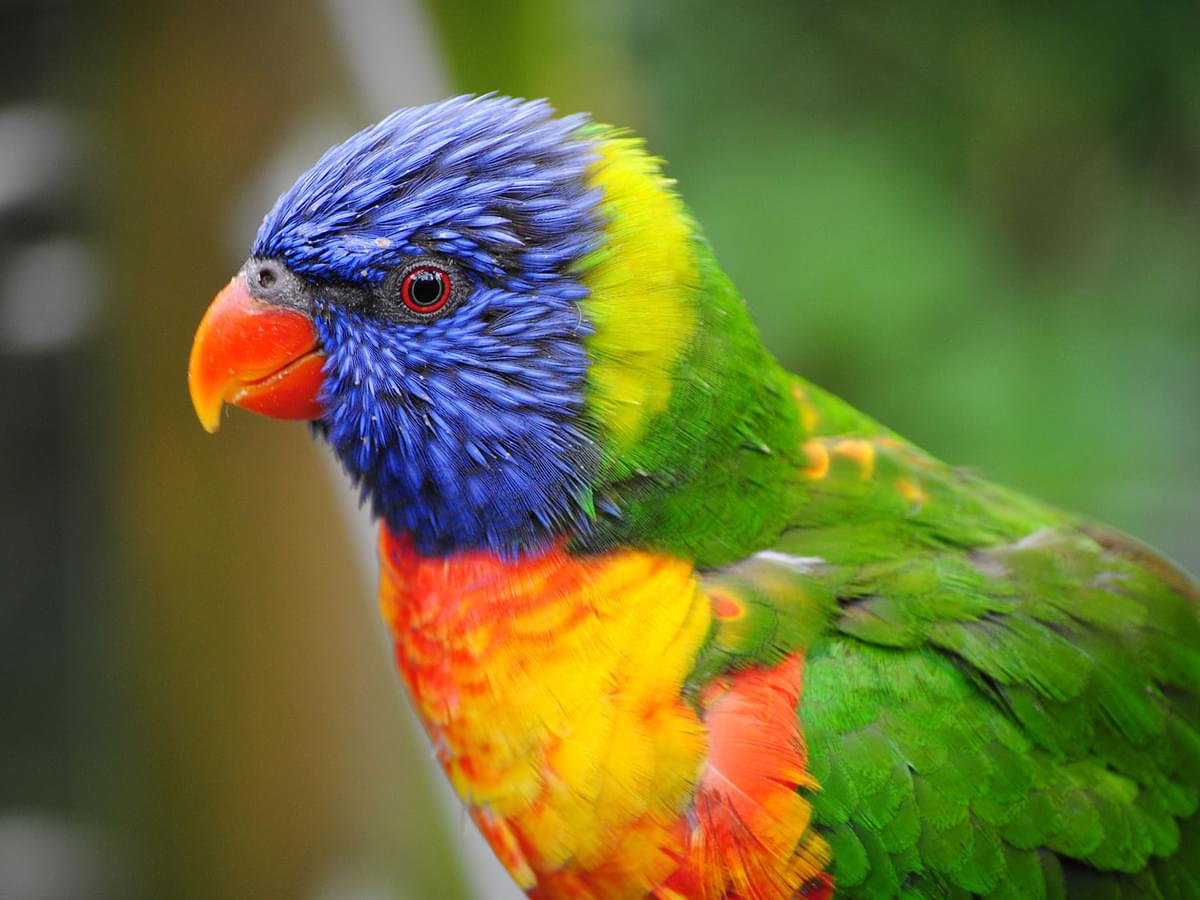
Key takeaways
- Global Bird Species Diversity: The Clements Checklist of Birds of the World identifies approximately 10,906 bird species globally, distributed across various habitats and regions. The highest diversity is found in tropical regions of South America, Southeast Asia, and Africa.
- Continental Bird Diversity: North America is home to nearly 2,400 species, with the United States alone boasting 1,205 species. Europe has 964 species, with the UK contributing 679. Oceania, including Australia, hosts about 2,305 species, while South America leads with an impressive 3,869 species.
- Factors Influencing Diversity: Bird species diversity is influenced by factors like latitude, habitat variability, climate, and human impact. The greatest diversity is near the equator, where stable day lengths and plant production support a wide range of species.
- Conservation Challenges: Birds face threats from habitat loss, pollution, invasive species, and climate change. Conservation efforts focus on habitat preservation, managing hunting and poaching, and targeted strategies like captive breeding and reintroduction programs.
There's more to discover. Continue scrolling for the full article below.
The Earth is home to an incredible diversity of bird species, living in practically every habitat, from the open oceans to the arid deserts. In some parts of the world, these animals have adapted and specialized to such an extent that it is possible to encounter hundreds of different species, all within walking distance!
Have you ever wondered how many species there are and why they live where they do?
In this article, we’ll look at some estimates from the World Bird Database and learn how many species live on each continent. We’ll also discuss some of the factors that determine bird diversity and the threats they face in the modern world, so read along if you’d like to learn more about the world’s amazing birdlife.
Bird Species: A Global Overview
It is difficult to put an exact number on bird diversity as new species are described, others go extinct, and opinions on the status of species vary. As of October 2022, however, the Clements Checklist of Birds of the World lists 10,906 bird species in 249 families and 41 orders of the Aves class.
Bird species diversity isn’t spread evenly across the globe, and the highest diversity occurs in tropical regions of South America, Southeast Asia, and Africa. There are many potential causes for increased diversity in an area, including habitat diversity and climatic conditions.
Bird diversity doesn’t only vary across space but also in time. Habitats can change relatively slowly due to factors like climate change or quickly in the case of wildfires or natural disasters. Changes can be seasonal too, causing migrations that see birds traveling anywhere from a few miles to a few thousand miles to summer breeding territories or overwintering grounds.
Continue reading to learn more about bird diversity in different parts of the world.

A pair of White-bellied Woodstar hummingbirds, found in Ecuador
North America: Soaring Over Mountains, Prairies, and Oceans
Most of North America falls within the Nearctic realm, a biogeographical region that includes Greenland, Canada, Alaska, the Contiguous United States, and much of Mexico. The continent is extremely diverse in climate and geography, stretching from near the equator in the south to the Arctic Circle in the north. Nearly 2400 species have been recorded from the continent.
United States
According to Avibase, the United States of America is home to an impressive 1205 bird species. The Southwest coast, southwestern deserts, and southeast of Texas are especially diverse and attractive to birdwatchers. California stands out with 723 species, while Texas has 698, and Arizona has 589.
A large percentage of America’s birds are migratory species, some breeding as far north as Alaska and many others departing for South and Central America for the Winter. There are four major flyways or routes that these birds use on migration, namely the Pacific, Central, Mississippi, and Atlantic Flyways.
Iconic American Birds
Bald Eagle (Haliaeetus leucocephalus)
The Bald Eagle is the national bird of the United States. These majestic raptors were nearly wiped out due to persecution and chemical pollution but have rebounded and are now a common sight along major waterways in many parts of the US.
Wild Turkey (Meleagris gallopavo)
Although farmed as a commercial poultry bird worldwide, the Wild Turkey is native to North America and occurs in forests and savannas in most of the Lower 48 states.
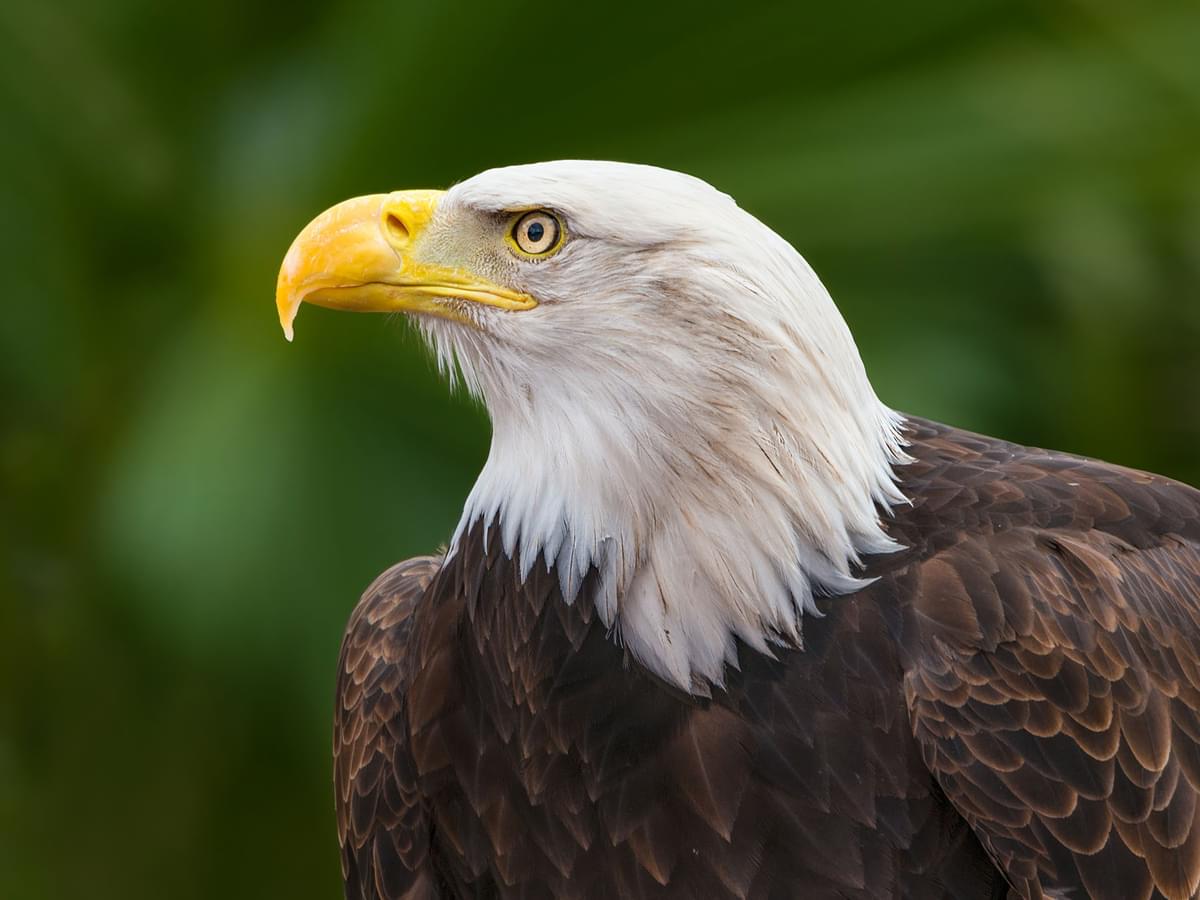
Bald Eagle

Wild Turkey
Northern Cardinal (Cardinalis cardinalis)
A colorful and familiar backyard bird, pairs of Northern Cardinals are regular visitors to bird feeders. These hardy songbirds occur primarily in the eastern half of the country, where they remain in the same areas throughout the year.
Eastern Bluebird (Sialia sialis)
The Eastern Bluebird is a beloved species, and many birdwatchers in the Northeast and Upper Midwest eagerly await the return of these colorful songbirds each summer. The country is home to two other similar and equally beautiful Bluebird species, namely the Mountain and Western Bluebirds.
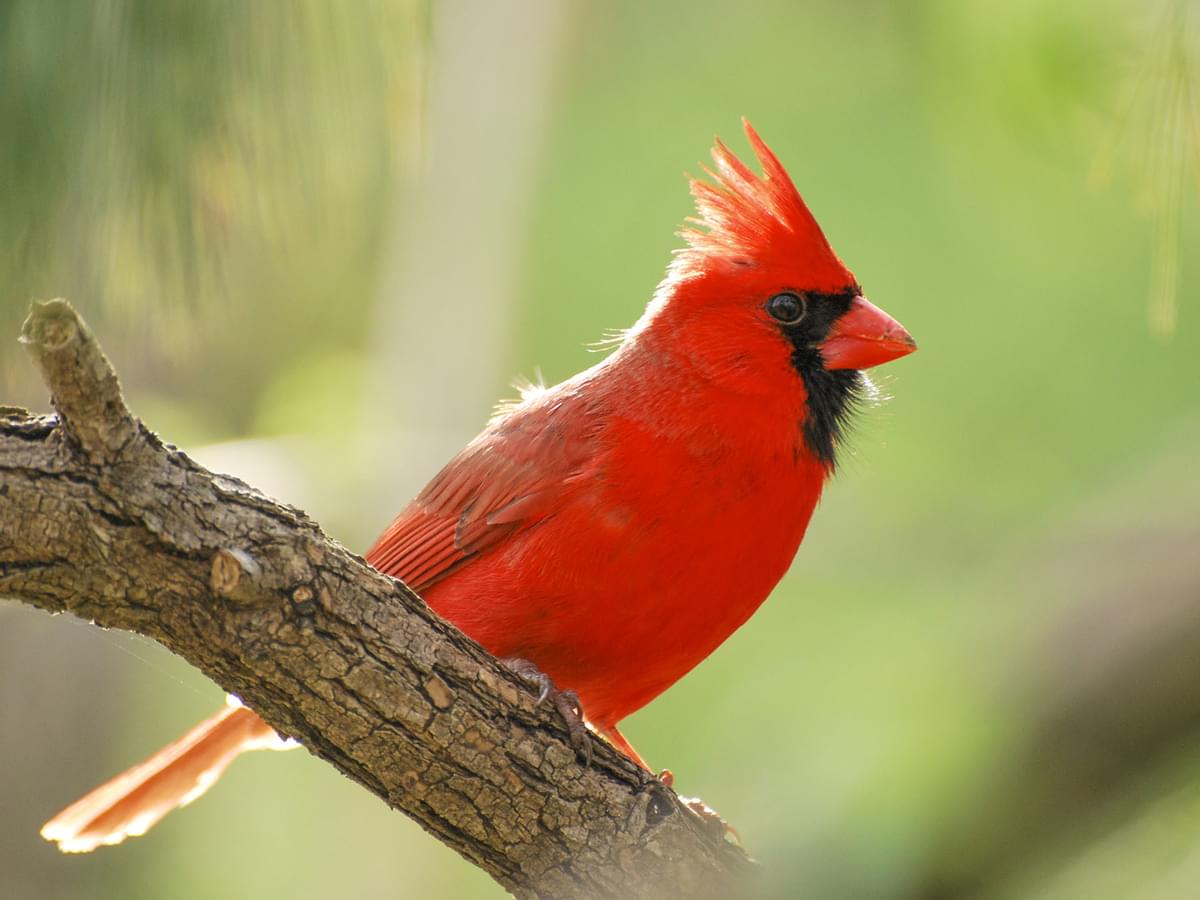
Northern Cardinal

Eastern Bluebird
Whooping Crane (Grus americana)
America’s tallest bird is also one of its rarest. The Whooping Crane population crashed to just 21 individuals in the mid-1900s but is rising steadily due to the efforts of dedicated conservationists.
Notable Endemics
The following American birds occur only in the United States:
- Red-Cockaded Woodpecker (Leuconotopicus borealis)
- Florida Scrub Jay (Aphelocoma coerulescens)
- Greater Prairie Chicken (Tympanuchus cupido)
- Yellow-billed Magpie (Pica nuttalli)

Whooping Crane
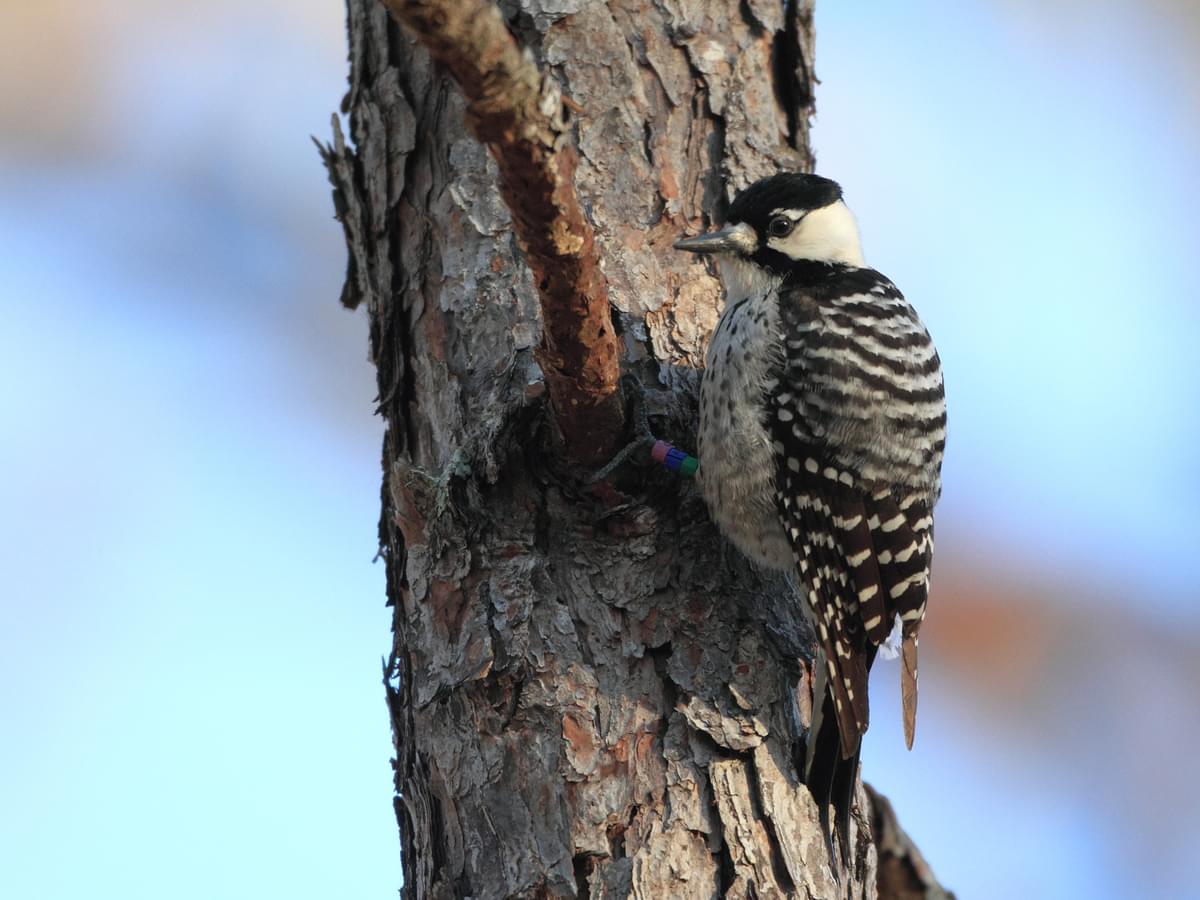
Red-cockaded woodpecker
Canada
Canada is a vast country covered primarily in boreal forests, tundra, and grasslands. It also boasts extensive coastlines that support diverse shorebirds and seabirds. Canada is home to 722 bird species, with the greatest diversity in the western province of British Columbia (571).
A large number of Canada’s birds are summer migrants that arrive from the United States, Mexico, and even South America to nest. While inhospitable in the winter, the Arctic region provides excellent breeding habitat for many species of wildfowl, waders, and even birds of prey in the warmer months.
Europe: From Alpine Peaks to Coastal Shores
Europe falls within the Palearctic realm, the world’s largest biogeographical region. It is a diverse continent, with habitats ranging from semi-arid scrub in the Mediterranean to alpine habitats in the Alps and polar tundra in the north. According to Avibase, Europe is home to 964 bird species.
United Kingdom
Situated in the far west of the European continent, The United Kingdom is home to a fascinating array of birds with a species count of 679. England has the highest species diversity, followed by Scotland, Wales, and Northern Ireland.
The United Kingdom is home to just one endemic bird species, the Scottish Crossbill (Loxia scotica). However, several endemic subspecies occur, particularly on island archipelagos like St.Kilda and Shetland. The UK’s varied coastline supports a high diversity of seabirds and shorebirds, including many important breeding colonies like Bempton Cliffs and Skomer Island.
Although highly developed as a country, an extensive collection of conservation areas protect the United Kingdom’s avifauna, with notable reserves such as the New Forest (280+ species) in the south and RSPB Mismere (340+ species) in the east of England.
Iconic UK bird species
Red Grouse (Lagopus lagopus)
The Red Grouse is an iconic gamebird of the United Kingdom's moorlands. This handsome bird is an endemic subspecies of the Willow Ptarmigan, which is widespread in the Northern Hemisphere.
Red Kite (Milvus milvus)
Practically wiped out in the 1900s, the Red Kite has made a triumphant return in the United Kingdom after reintroduction began in the late 1980s. More than 4,000 pairs of these elegant raptors breed in the UK today.

Red Grouse
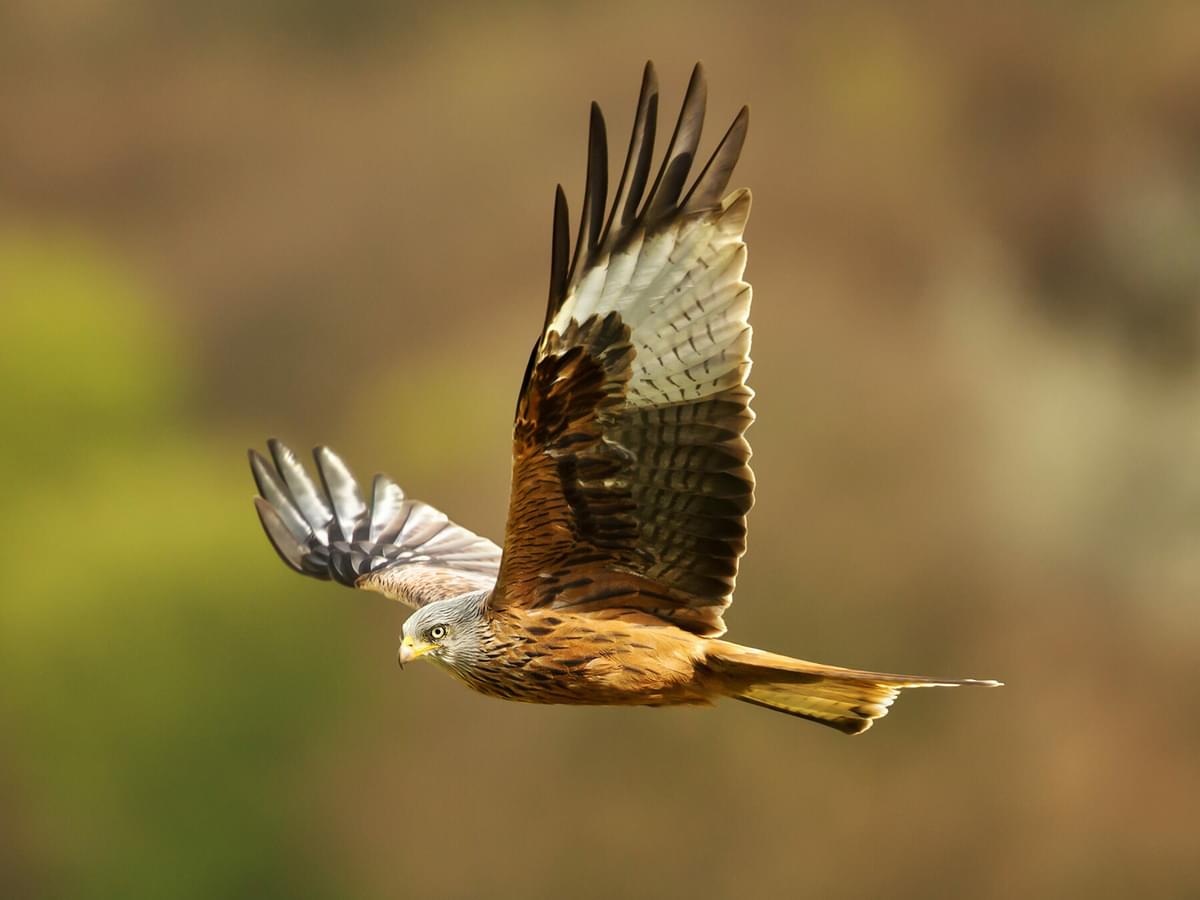
Red Kite
Puffin (Fratercula arctica)
With its large, multicolored bill and dapper black and white plumage, the Puffin is a distinctive little seabird. Over half a million of these small fish hunters nest in colonies along the UK coastline.
Mute Swan (Cygnus olor)
The Mute Swan is one of the world’s most beautiful and elegant birds. These massive waterfowl are a common sight on the UK’s rivers, lakes, and ponds.
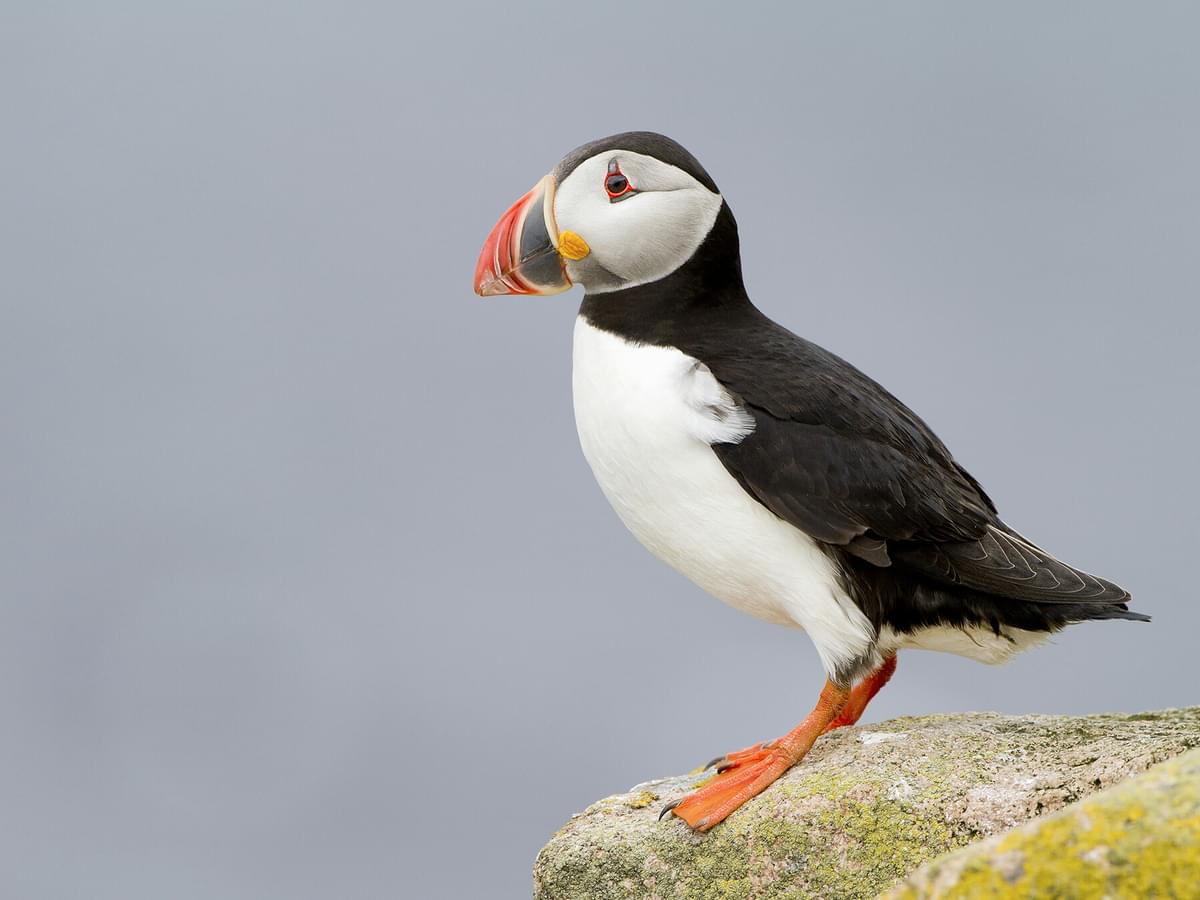
Puffin

Mute Swan
Australia and Oceania: An Array of Vibrant and Unique Birds
Oceania is the smallest of the Earth’s continents but is home to an impressive diversity of species. There are an estimated 2305 species in the region, which includes Australasia, Polynesia, Micronesia, and Melanesia.
Australia
Australia is a vast country and the largest landmass in Oceania. It is a land of diverse habitats, including deserts, forests, mountains, and savannahs that support a fascinating variety of birds, from massive flightless species to unique avian architects like the Bowerbirds.
Over 1,000 bird species occur in Australia, including residents, migrants, and more than 20 introduced species. There are over 50 species of Parrots, including iconic species like the Budgerigar (Melopsittacus undulatus) and the Sulphur-crested Cockatoo (Cacatua galerita).
Unique Australian birds
Southern Cassowary (Casuarius casuarius)
With its brightly colored skin and unique head structure, the Cassowary is unlikely to be confused with any other species. This powerful flightless species is said to be the world’s most dangerous bird.
Emu (Dromaius novaehollandiae)
The flightless Emu is the unofficial national bird of Australia. They are the second tallest bird in the world.

Southern Cassowary

Emu
Laughing Kookaburra (Dacelo novaeguineae)
Widespread in the Eastern half of Australia, the Laughing Kookaburra is a large Kingfisher species that hunts all sorts of small animals. These birds are famous for their hysterical territorial call.
Superb Lyrebird (Menura novaehollandiae)
The Superb Lyrebird is among the world’s best mimics, and males produce an amazing repertoire of sounds to impress a female, including the calls of other birds and even machines and other sounds from their environment.

Laughing Kookaburra

Superb Lyrebird
South America: Land of Rainforests and Andes
Covering nearly 7000 square miles (over 17 million square kilometers), South America is a large and geographically varied continent located chiefly in the Southern Hemisphere. It has exceptionally high bird diversity, with an estimated 3869 species.
The continent includes extensive savannas, wetlands (including the largest river system on Earth), deserts, and the magnificent Andes Mountain range that runs from Venezuela to Argentina.
The neotropics are home to over a third of the world’s bird species, highlighting the region’s impressive biodiversity. Countries like Colombia (2055 species!), Brazil, and Peru are particularly rich. However, bird diversity decreases with rainfall and distance from the equator, and the country of Chile is home to just 589 species.
Iconic South American bird species
Greater Rhea (Rhea americana)
The Greater Rhea is South America’s largest avian. Like the Ostrich, these flightless birds can run at high speeds to escape their predators.
Andean Condor (Vultur gryphus)
The Andean Condor of South America is the planet’s largest bird of prey. These impressive Vultures are widespread along the Andes Mountain range.

Greater Rhea

Andean Condor
Harpy Eagle (Harpia harpyja)
The mighty Harpy Eagle is an iconic bird of forests in South and Central America. These Eagles regularly prey on large mammals like sloths and monkeys.
Toco Toucan (Ramphastos toco)
With its massive orange bill and smart, black-and-white plumage, the Toco Toucan is an instantly recognizable species. These unique fruit-eating birds are most widespread in the central and eastern parts of the continent.
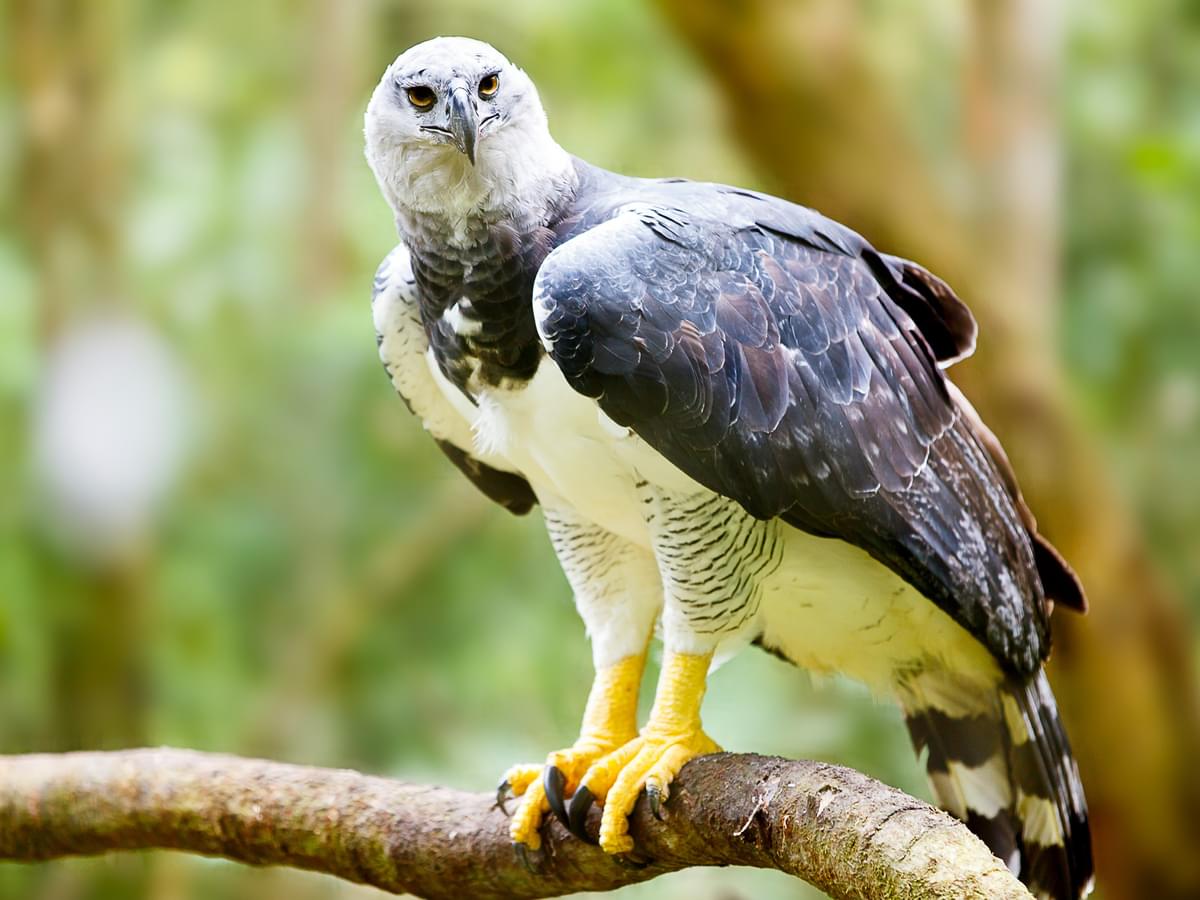
Harpy Eagle

Toco Toucan
Africa: From Sahara to Savannas
Africa is a vast continent with an incredible range of habitats, including extensive forests, savannas, and deserts. An estimated 2835 species are native to Africa, and equatorial countries like Kenya and the Democratic Republic of Congo (DRC) are particularly diverse.
Most of Africa falls within the Afrotropical realm. However, the Sahara desert and Mediterranean regions of North Africa are included in the Palearctic Realm, which covers most of Europe and Asia. The tropical regions are thought to be the second greatest center of bird diversity, home to an impressive one-fifth of all bird species.
Most of Africa’s bird species occur nowhere else. However, the continent also shares many migratory bird species with Asia and Europe to the north, and its extensive coastline is home to a wide variety of tropical and temperate seabirds.
Iconic African bird species
Ostrich (Struthio camelus)
The flightless Ostrich is the world’s largest, tallest, and fastest-running bird species.
Kori Bustard (Ardeotis Kori)
The impressive Kori Bustard is a large and widespread ground bird, often accepted as the world’s heaviest flying animal.

Ostrich

Kori Bustard
Shoebill (Balaeniceps rex)
Central African swamps are home to the remarkable Shoebill, a large waterbird with a massive, uniquely shaped bill.
African Gray Parrot (Psittacus erithacus)
A popular and long-lived pet worldwide, the African Gray Parrot is one of the most intelligent bird species and may even have the cognitive ability of a young child.
Greater Flamingo (Phoenicopterus roseus)
The Greater Flamingo is the largest species in its family. These colorful and graceful birds are widespread in Africa, occurring from South Africa to the Mediterranean coast.

Shoebill Stork

African Grey Parrot
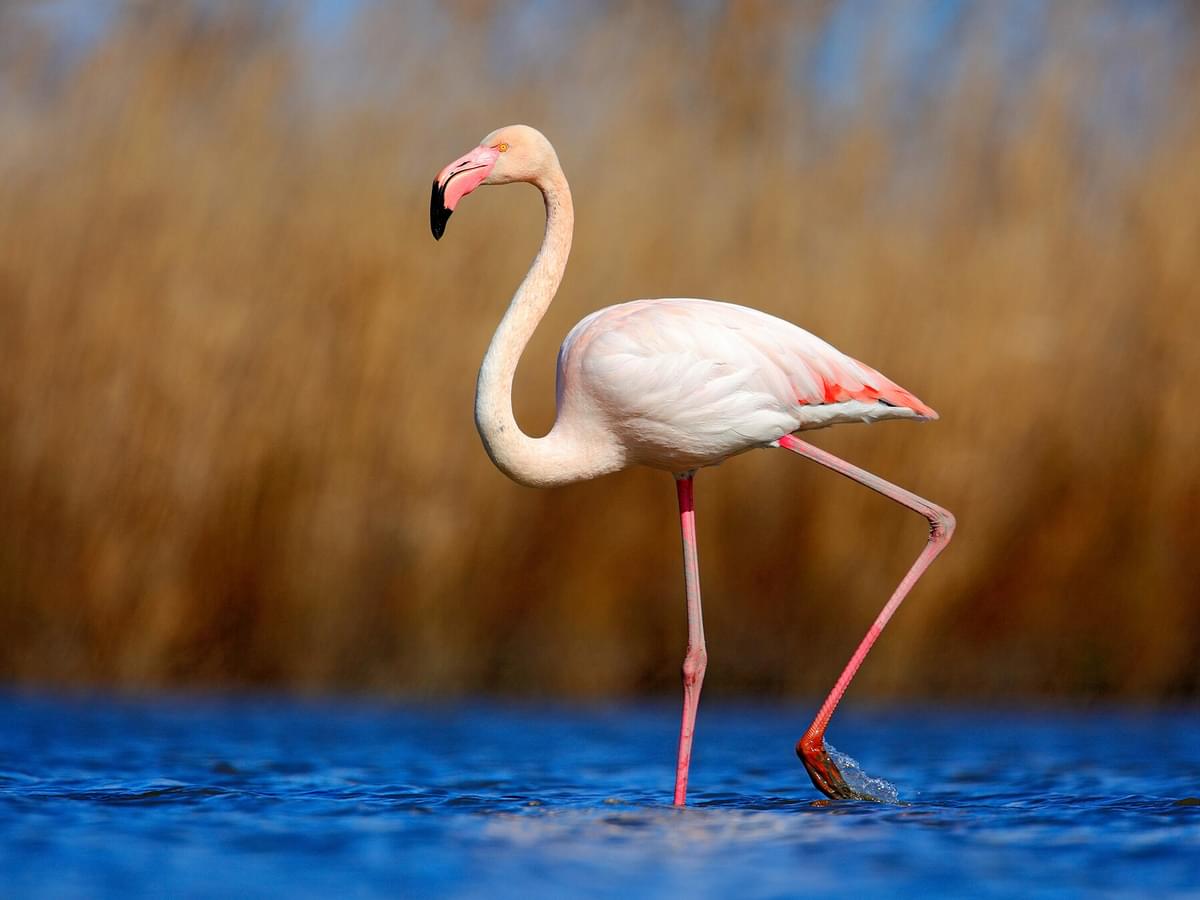
Greater Flamingo
Asia: Where Oriental and Occidental Birds Meet
The world’s largest continent also has the highest bird diversity, with just over 4,000 species. The Indo-Malayan region of South and Southeast Asia is especially rich and home to nearly a fifth of all the world’s bird species.
This vast land contains every conceivable habitat, including frozen high arctic landscapes, the world’s tallest mountains, great steppe grasslands, arid deserts, boreal forests, and steaming jungles.
Iconic Asian birds
Indian Peafowl (Pavo cristatus)
The Indian Peafowl is India’s national bird and is well-known all over the world for its extravagant plumage. The male (Peacock) ranks high among the world’s most spectacular birds.
Steller’s Sea Eagle (Haliaeetus pelagicus)
At up to nine kilograms (nearly 20 pounds), Steller’s Sea Eagle is the world’s heaviest eagle.

Indian Peafowl

Steller’s Sea Eagle
Golden Pheasant (Chrysolophus pictus)
The Golden Pheasant is a Chinese groundbird with some of the brightest colors in the bird world. Males use their colors to impress their well-camouflaged female counterparts.
Blakiston’s Fish-Owl (Ketupa blakistoni)
Blakiston’s Fish Eagle is the second largest owl species. These majestic birds hunt along streams in Japan, Russia, and China.

Golden Pheasant

Blakiston’s Fish-Owl
Antarctic Birds: Braving the Cold
Despite being nearly twice the size of Australia, the isolated continent of Antarctica and surrounding waters support less than 90 bird species. Due to the inhospitable nature of the land habitats in Antarctica, the continent is home almost exclusively to seabirds, with just one terrestrial species.
Penguins, a group of large, flightless seabirds, are well-represented in Antarctica with up to nine different species. Many other beautiful birds hunt in the rich waters off the coast, including Albatrosses, Petrels, Prions, Gulls, and Shearwaters.
Iconics Antarctic birds
Emperor Penguin (Aptenodytes forsteri)
The Emperor Penguins is the world’s largest seabird. These iconic birds are endemic to Antarctica.
Snowy Sheathbill (Chionis albus)
The Snowy Sheathbill is a pure white, chicken-like bird that hunts and scavenges along the shores of Antarctica. It is the continent’s only land bird.

Emperor Penguin

Snowy Sheathbill
Arctic Tern (Sterna paradisea)
The Arctic Tern is a beautiful little seabird with a remarkable ability. These graceful birds migrate between the Arctic and Antarctic regions each year, which is the world’s longest migration.
Wandering Albatross (Diomedea exulans)
The Wandering Albatross has the longest wings of any bird. These large seabirds use their streamlined wings to travel tremendous distances without needing to flap.
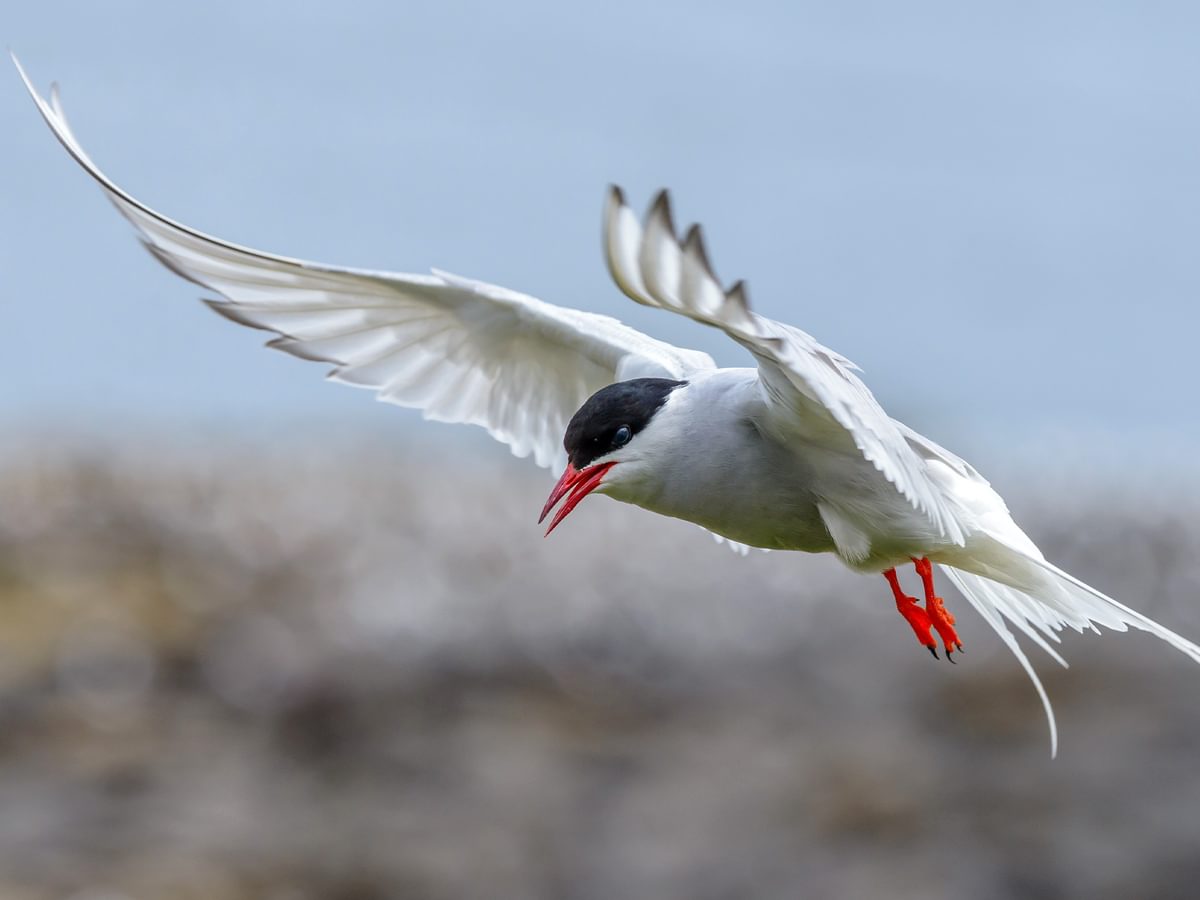
Arctic Tern

Wandering Albatross
Factors Influencing Bird Diversity
Have you ever wondered why some parts of the world explode with life while others have more modest species lists? Continue reading to learn about the drivers of bird diversity.
Latitude
Species diversity is generally highest closest to the equator, where daylengths remain relatively stable, and plant production is possible throughout the year. However, this is not equally spread across different bird families. Penguins, for example, are most diverse in the Antarctic zone, while Hummingbird species richness is highest in the tropics.
Habitat Variability
Some birds are highly localized and are associated with specific isolated habitats. A high diversity of these specialized species can occur in areas with many habitats, such as mountainous regions with different microclimates and vegetation zones.
Human Influence
Human influence typically results in reduced biodiversity and fewer bird species. Habitat loss for agriculture, mining, and urban development forces many species out of the area, favoring adaptable generalists and commensal species like House Sparrows and Feral Pigeons.
Climate
Climate has an important impact on bird species diversity because it affects the entire food chain. Warm areas with high rainfall can support year-round plant production, providing food for more birds and their prey. Arid regions tend to support fewer birds, including tough and adaptable generalists and specialized and endemic species.

Close up of Australias vibrant Gouldian Finch
Conservation Efforts and Threats
Sadly, birds are under threat all over the world, and many have already been lost forever. Conservation actions may have come too late to save species like the Passenger Pigeon of North America and the Great Auk of the North Atlantic, but many bird species have been brought back from the brink of extinction in parts of their range.
Birds in Decline
The major threat to birds across the world is habitat loss and degradation, typically caused by clearing native vegetation or mismanaging natural habits.
A classic example of this is clearing tropical forests for crop farming, although it's important to note that any change from a diverse natural habitat to a monoculture is detrimental. For example, replacing natural grasslands with forestry plantations can be just as harmful.
Invasive plant species also threaten birds by replacing the natural vegetation in their habitats, while invasive animals prey on birds or compete with them for food, shelter, and nesting sites. Urban developments also alter the landscape and displace wild bird species.
Pollution from pesticides, industrial activities, oil spills, and other sources also affect birds, their food, and their environment. Birds are affected by light pollution, and infrastructure like buildings and towers can pose a major collision risk.
Habitat Conservation
More than anything else, we need to conserve bird habitats. Without enough habitat to support viable populations of a species, there is no long-term future. No species exists in isolation, so birds rely on the plants and animals that share their favorite habitats.
Focused Actions
Targeted conservation strategies are also essential to control activities like hunting and poaching or support populations of species on the brink of extinction. Captive breeding programs and reintroduction offer a critical lifeline when species decline to perilous levels.

A pair of Scarlet Macaws in flight
From the extreme frozen landscapes of Antarctica to the tropical rainforests around the equator, birds have flourished and thrived for millions of years.
The diversity of sizes, shapes, colors, and behaviors in the bird world today is truly remarkable and really highlights the extent that life adapts to survive on our planet!
Each unique species has its own vital role to play in life on Earth, so get out there, appreciate them, and do what you can to protect them for current and future generations.
FAQs
Which country has the highest bird diversity?
Colombia in South America has the world’s highest bird diversity, with an incredible 2055 known species.
Do any birds occur on all continents?
No bird species occur on every continent. However, many species occur on every continent except Antarctica. These include the Peregrine Falcon, House Sparrow , Barn owl, and Sanderling.
How many species of birds are there in North America?
According to Avibase, an impressive 2375 bird species occur in North America. The highest diversity occurs in Central America, although many species brave the far north of Canada and Alaska, especially during the summer breeding season.
What is the order of 60% of all bird species in the world?
Passerines or songbirds are the most diverse order of birds, containing about sixty percent of all bird species.
Do birds outnumber humans?
If you include all bird species together, birds outnumber humans by an estimated six to one.
The domesticated chicken is the world’s most common bird, much more numerous than ourselves or any wild species.
On this page
- Bird Species: A Global Overview
- North America: Soaring Over Mountains, Prairies, and Oceans
- Europe: From Alpine Peaks to Coastal Shores
- Australia and Oceania: An Array of Vibrant and Unique Birds
- South America: Land of Rainforests and Andes
- Africa: From Sahara to Savannas
- Asia: Where Oriental and Occidental Birds Meet
- Antarctic Birds: Braving the Cold
- Factors Influencing Bird Diversity
- Conservation Efforts and Threats
- FAQs


